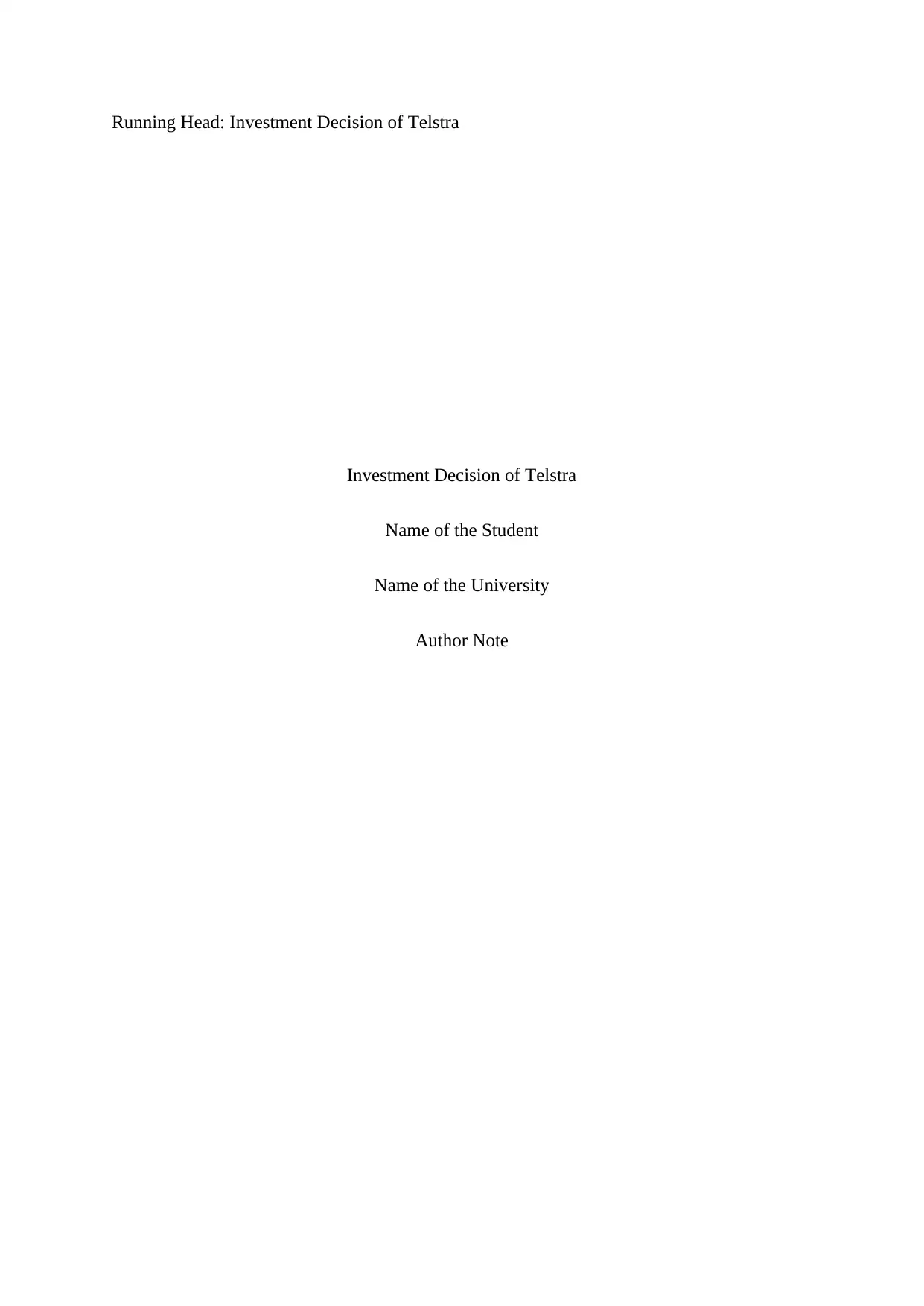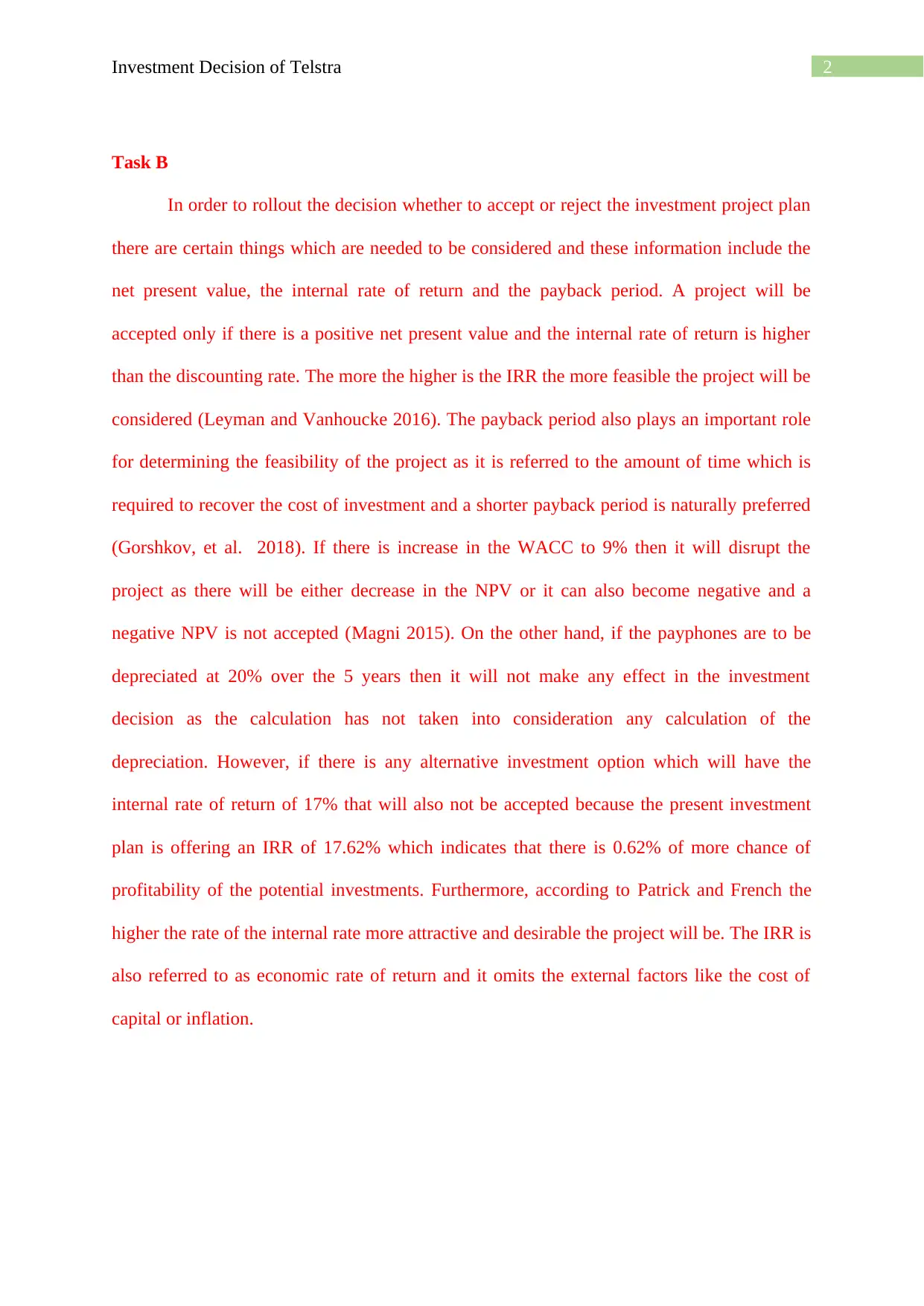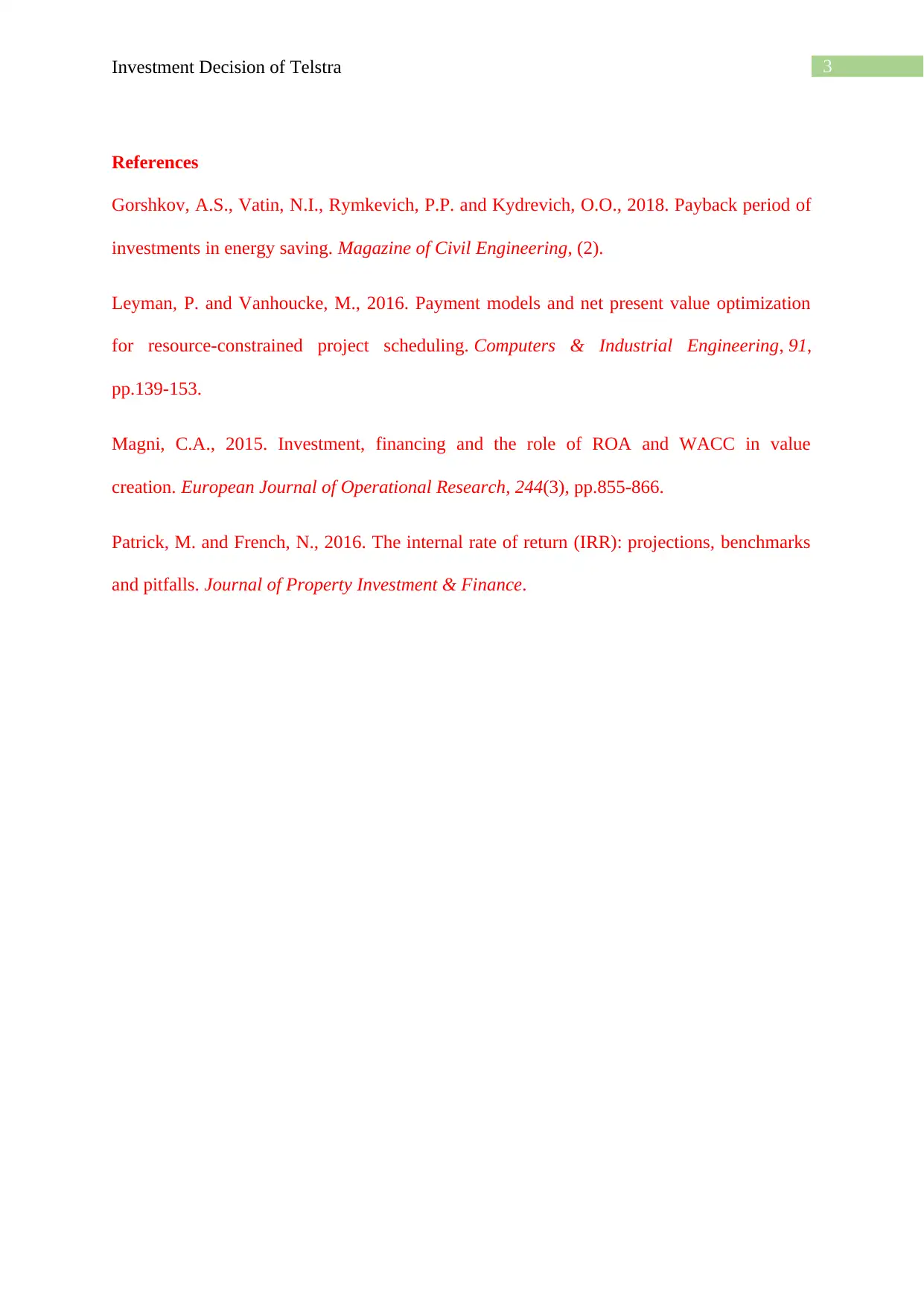Analysis of Telstra's Investment Decision: A Financial Report
VerifiedAdded on 2022/08/18
|4
|504
|18
Report
AI Summary
This report analyzes Telstra's investment decision-making process, focusing on key financial metrics. It examines the application of Net Present Value (NPV), Internal Rate of Return (IRR), and payback period to evaluate the feasibility of an investment project. The analysis considers the impact of changes in the Weighted Average Cost of Capital (WACC) on project viability. The report also explores the implications of depreciation methods and compares the project's IRR with alternative investment opportunities. It highlights the importance of the IRR as a measure of a project's attractiveness, independent of external factors like the cost of capital and inflation, and provides insights into how these factors influence the overall investment decision. The report concludes with a discussion of the factors that influence the investment decision and the importance of IRR and the payback period.
1 out of 4











![[object Object]](/_next/static/media/star-bottom.7253800d.svg)